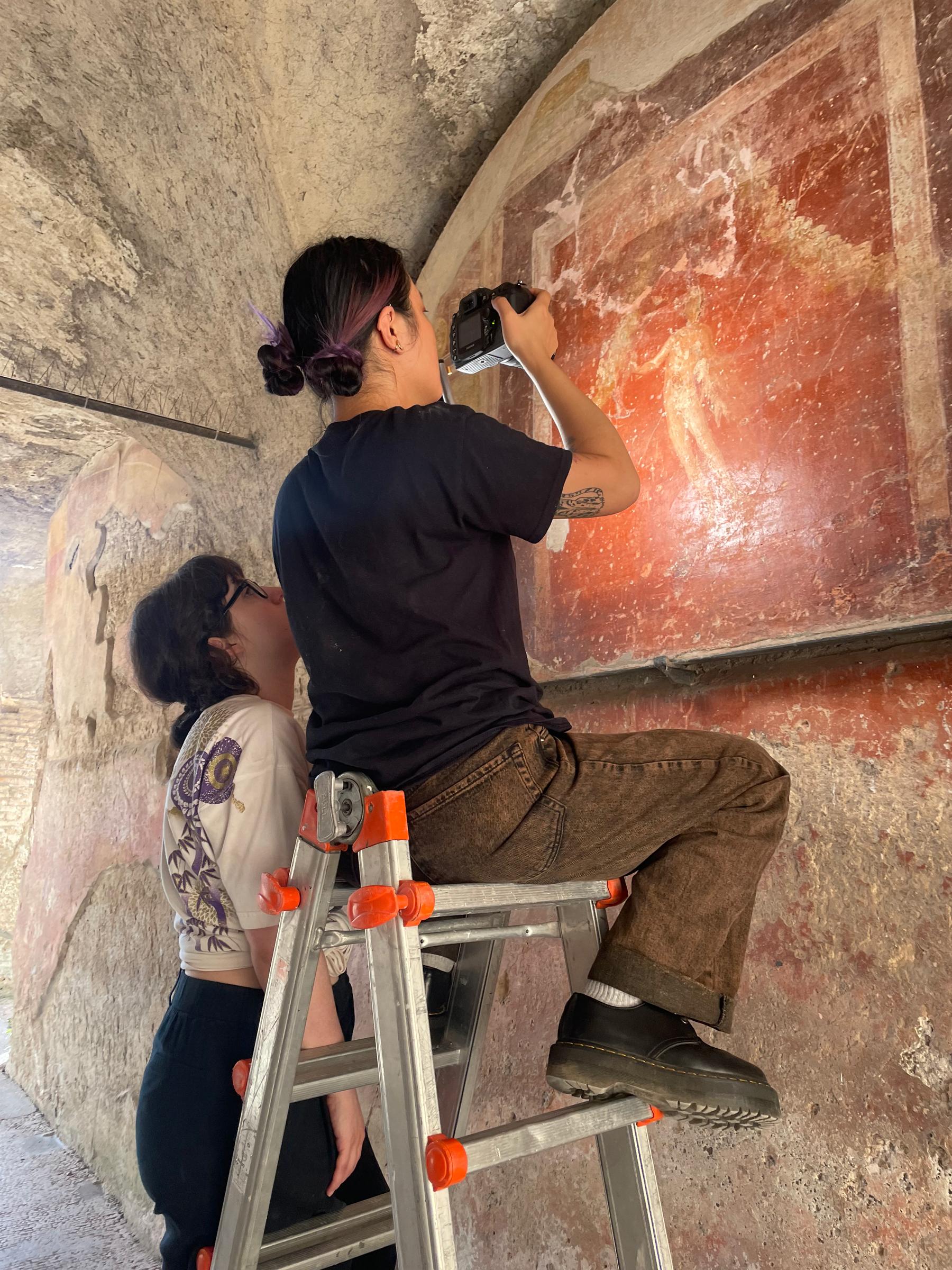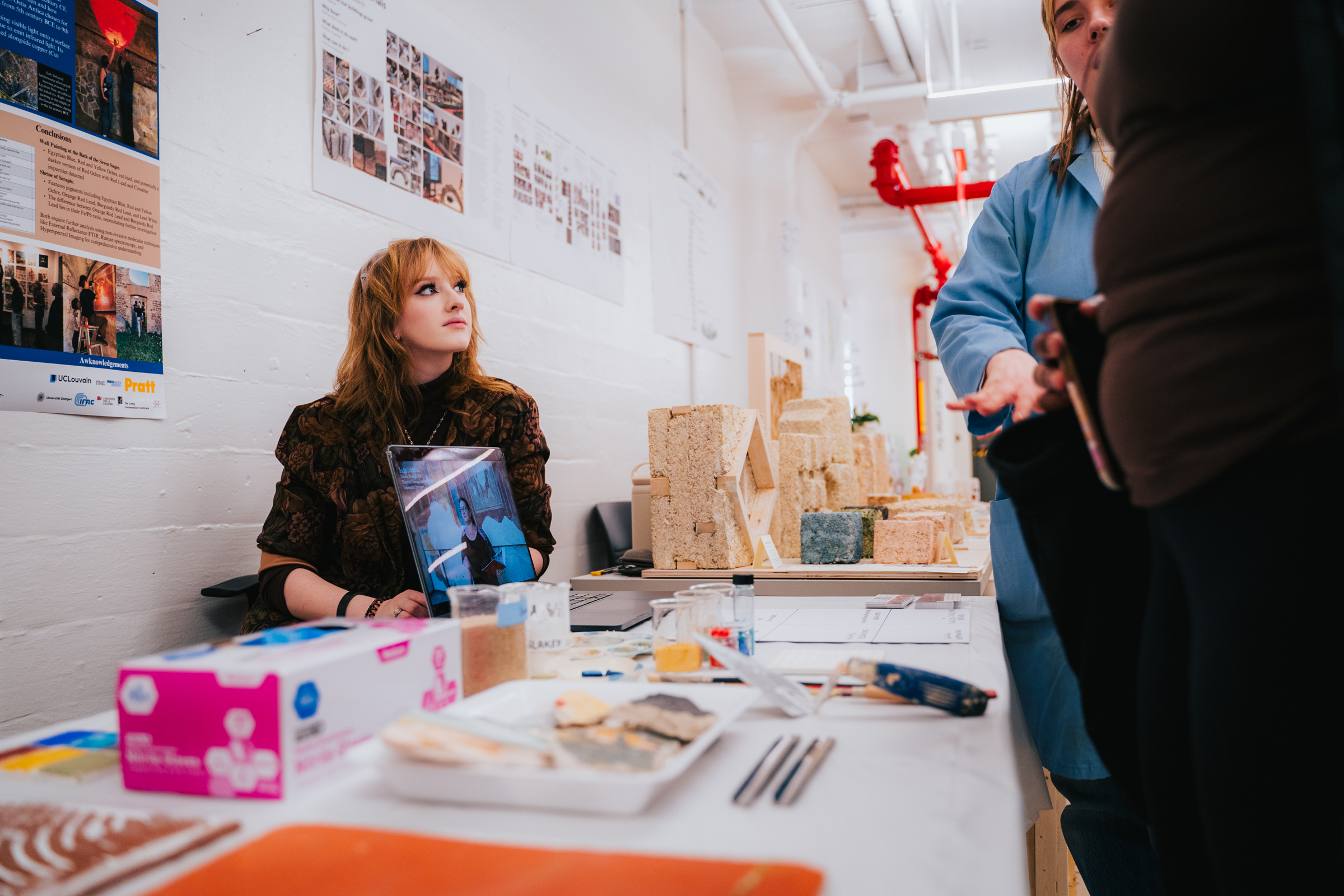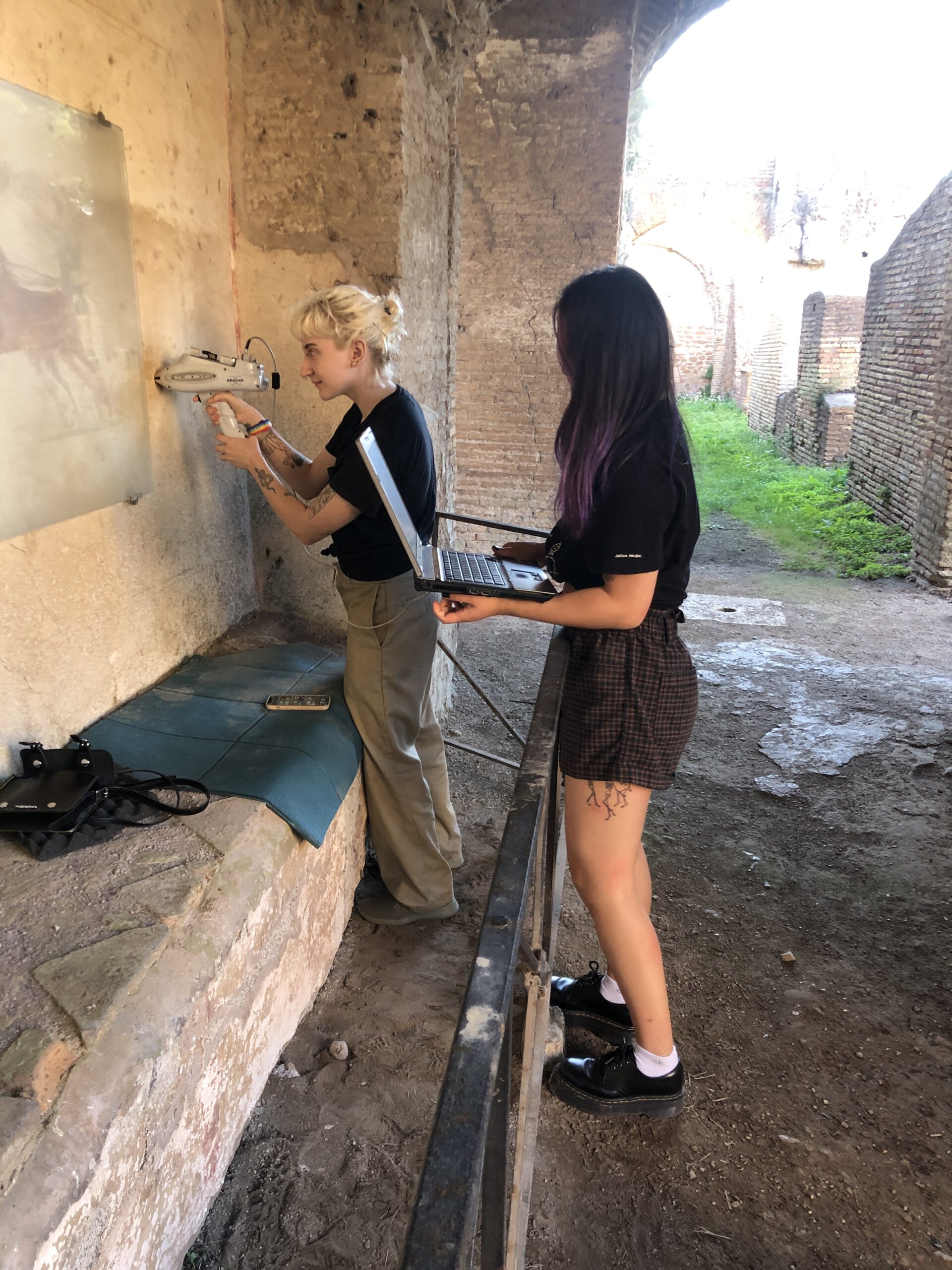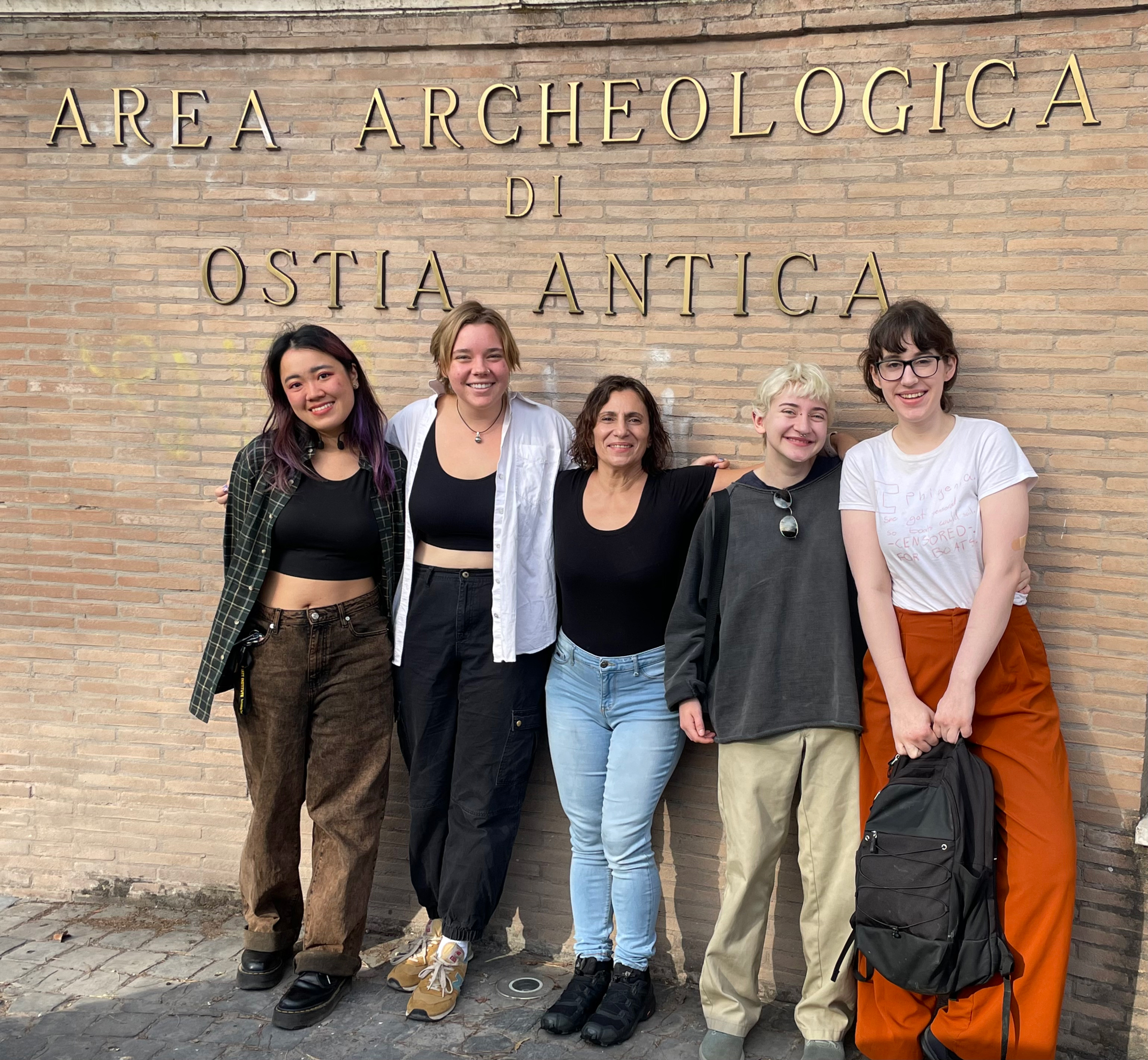Analyzing an Ancient City: Non-invasive studies of Ostia Antica Archaeological Park’s Wall Paintings

Eleonora Del Federico, Professor, Math and Sci/SLAS
Pratt Institute’s Students and Alumni Collaborators:
Malena Ramsey, HAD’2023
Stephanie Wong, graduate student, MA Design Management
Annabelle Davis, student, Fashion Design
Sarah Burry, graduate student, MLIS/M.A. HAD
Adelaide Steinfeld, HAD’2020
Yesenia Valle Mora, HAD’2020
Katelin Fallon, MS HAD 2013
Dr. Paolo Tomassini, UCLouvain
Prof. Bernhard Blümich, Aachen University RWTH
Dr. Jürgen Frick, Judit Zöldföldi, Stuttgart Universität
Dr. Marcello Picollo, Costanza Cucci Institute of applied physics “Nello Carrara” (IFAC) CNR
Dr. Giacomo Chiari, Getty Conservation Institute
Dr. Domenico Miriello, Università della Calabria
School of Liberal Arts and Sciences

Ostia Antica was the harbor city of Rome during Antiquity. Located at the mouth of the Tiber River, it was born as a military settlement to protect the capital of the Roman Empire and control trade across the sea but it quickly became a large and rich city, the maritime façade of Rome and the door to the Empire. Today, Ostia is one of the largest archaeological sites in Italy, which, unlike Pompeii or Herculaneum, preserves building phases spanning almost a millennium, from the 4th c. BCE to the 6th c. CE. This makes Ostia an unequal site to investigate the evolution of ancient painting through time. Before this project, the scientific analysis of Ostia’s wall paintings had been scarce. Our research aims to study wall paintings at Ostia through scientific analysis on a large scale to determine how the paintings’ materials, such as pigments, and wall preparation changed with time.
The techniques used in the analysis are portable and non invasive, namely XRF (X-Ray Fluorescence), MRI (Magnetic Resonance Imaging), Visible Induced Luminescence and Raman Spectroscopy. The use of Egyptian Blue is also being mapped within the city and with time, expanding on our pre-pandemic studies that were presented at the ROH 2021 (https://www.pratt.edu/work/the-search-for-egyptian-blue/).
Since then our team formed by Pratt Institute /RWTH Aachen University,/University of Louvain teamed up with Stuttgart University, The Institute of Applied Physics “Nello Carrara” (IFAC) CNR, and former head of research at the Getty Conservation Institute, Dr. Giacomo Chiari to facilitate the large-scale analysis and to test novel analytical tools such as Hyper Spectral Imaging (HSI), an improved MRI device and the newly developed SmART_Scan X-Ray mapping software.
So far fourteen buildings and 24 paintings have been studied. Some examples of our preliminary results show that the most widespread pigment are earth colors: reds, yellows, and greens are based on Iron, but in important buildings, Egyptian Blue is present up to the 3rd c. CE. Red Lead is mostly found in higher-quality paintings and on the clothing and shrouds of characters and the very expensive deep red Cinnabar has only been observed at the sophisticated House of the Eagles, although it is expected to be found on other important buildings.
In addition to understanding the ancient artists and how they worked in time and the taste and preferences of the building dwellers, this information is key for the preservation efforts of the site by shedding light on the presence of early undocumented conservation treatments along with providing information on the materials and pigments composition of the walls which ultimately assist in the design of conservation strategies for the paintings.
Finally, archaeologists and conservators, working alongside scientists, create a model for future multidisciplinary collaborations at other archaeological sites. This project is the first one of its kind to be carried out on such a large and widespread scale in Ostia.

